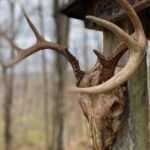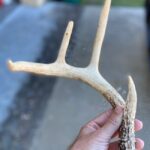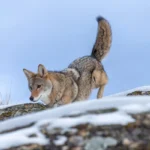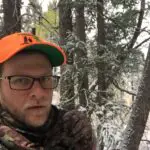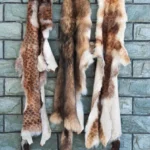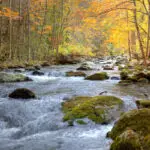Across the country, when spring hits millions of people head out into national and state parks to recreate.
While you’re out enjoying the landscape, it’s important to stop and appreciate the little things, like the beautiful blossoming wildflowers growing in the valleys.
When you come across these flowers, it can be tempting to want to bring some home with you, but is it legal to pick flowers on public land?
Table of Contents
- Can You Pick Flowers on Public Land?
- Where Are You Allowed to Pick Flowers?
- What are the Penalties for Picking Flowers on Public Land?
- Things to Consider if Picking Flowers on Public Land
- Final Thoughts
Can You Pick Flowers on Public Land?
If you are unsure whether it is legal to pick flowers on the land you are hiking, hunting, or fishing on, it is best to assume that it is prohibited.
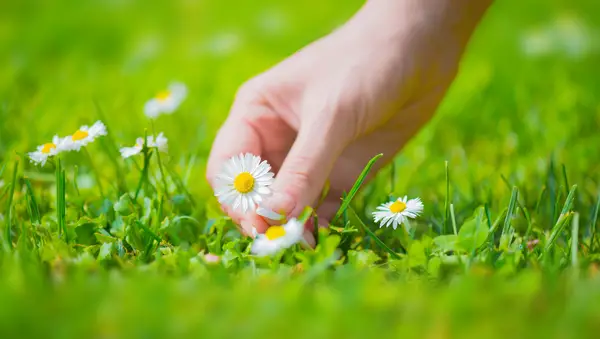
It is always best to practice leave no trace principles when spending time in any natural space. This means leaving everything where you found it, so other visitors can also appreciate the flowers and other plant life.
So, is it legal to pick flowers on public land? The actual answer is that it depends on where you are, who manages the land, and how much you want to pick.
See also: Can Public Land Be Closed?
Where Are You Allowed to Pick Flowers?
Some land managers allow visitors to pick “reasonable amounts” of flowers and fruits for non-commercial use.
Others require a permit to remove any resources from the land. Others still outright prohibit the collection of plant products.
Federal Land
The four main agencies that manage federal public land are the National Parks Service (NPS), the Department of the Interior Bureau of Land Management (BLM), the US Forest Service (USFS), and the US Fish and Wildlife Service (USFWS).
Generally, it is prohibited to pick flowers or remove plant life from federally managed land.
In some cases, you can apply for a permit, such as on USFS land. A USFS collection permit costs at least $20 and only permits collection for non-commercial use, up to $300 in value.
The USFS also offers free permits for those seeking to pick only small quantities when supply is not limited.
On BLM land, you are allowed to pick a reasonable amount of flowers, fruits, and berries for non-commercial use. You are prohibited, however, from removing any protected species.
State Land
As with most matters of state legislature, whether you are allowed to pick flowers on state-managed land will vary from place to place.
It is generally best to err on the side of caution and assume that removal of any plant matter is prohibited or requires a permit.
As an example, in North Dakota Wildlife Management Areas (WMA), you need a permit to remove any plant matter at all. The same goes for Minnesota land managed by the state Department of Natural Resources (DNR).
Both state agencies, however, allow visitors to remove small amounts of berries, fruits, and flowers for personal use without a permit.
Local Parks
Again, the details here will vary between counties but generally, you are not allowed to pick flowers from local parks.
Any cultivated displays are definitely a no go for collecting flowers without risking a fine. Cultivated flowers might be displays found in parks, on roundabouts, or in road meridians.
What are the Penalties for Picking Flowers on Public Land?
Generally, if you are caught picking flowers in a prohibited area, otherwise disobeying posted signage, or removing significant amounts of brush you can be charged with a misdemeanor offense.
On federal land, this equates to a maximum fine of $1,000 and/or up to 12 months in jail. Penalties on state land will vary. In Texas, for example, you can face a maximum fine of up to $500.
Things to Consider if Picking Flowers on Public Land
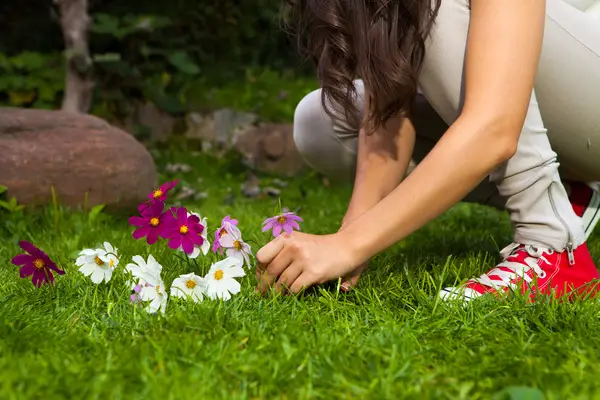
The first thing that may have come to mind is “what is a reasonable amount of flowers to pick?” We didn’t come across any actual definitions of a “reasonable amount,” other than perhaps the $300 limitation on USFS collection permits.
The best practice is to use your discretion and only take as much as you need.
Whenever we spend time on public land, we need to respect the wildlife and nature of the space. Consider how much you can take without disturbing the land.
Generally, it is good to rethink if you actually need to take the flowers at all.
Millions of Americans recreate on our public lands, if everyone removed a reasonable amount of wildflowers, you have to wonder how much would remain in popular areas.
Another important thing to note is that, typically, when it is permitted to collect small amounts of flowers and fruits, that means collecting only the flower or fruit.
Even in areas like BLM land, it is prohibited to damage the land, cut down trees, or remove full plants.
Final Thoughts
In some areas it is legal to pick flowers on public land, in others you require a permit, and in others, like NPS land, it is outright prohibited. Before you decide to remove any flowers on your hike, consider looking into the area’s regulations.
In addition to picking flowers on public land, there are lots of other stipulations and rules, such as those regarding planting food on public land.
It is also important to consider whether you actually need to pick the flower.
Perhaps you plan to use your trimmings to cultivate a garden of native species on your property, or perhaps you just want to pick it, smell it, and throw it away.
In any case, it is up to you to make the decision of whether the flower would be better off left where you found it.
Flowers are beautiful but they are also an important part of the local ecosystem, and we are all responsible for protecting that ecosystem. Thank you for being a good steward of the land, and thank you for reading.
